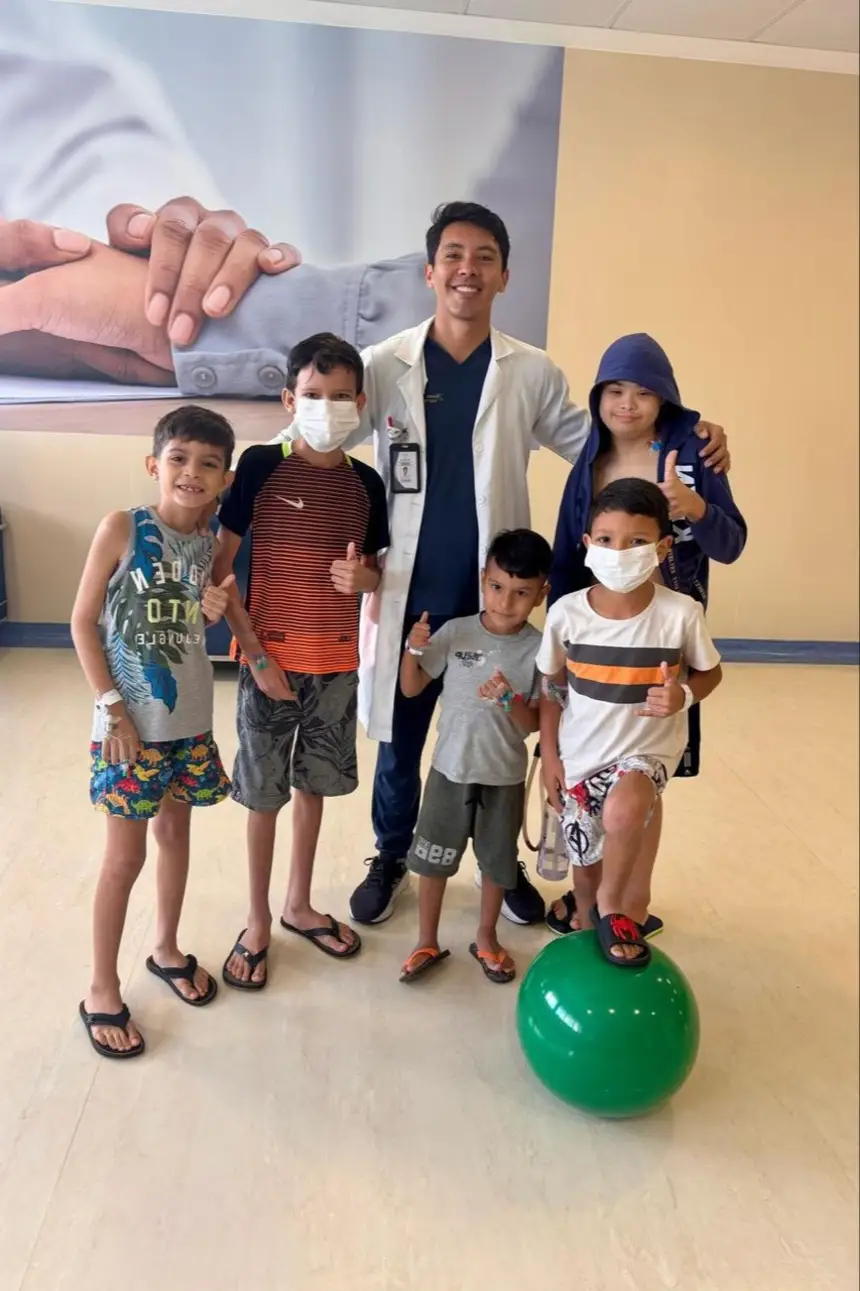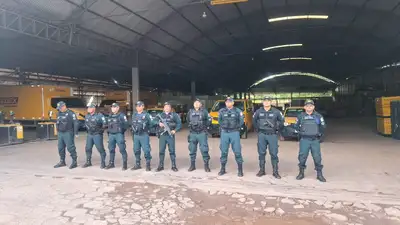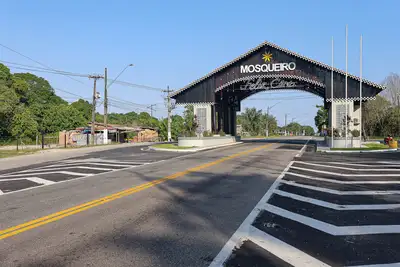Humanized rehabilitation at PSRM reflects on recovery and quality of life for patients
The physiotherapy team conducts hospital rehabilitation outside the bed, with interventions that ensure injury prevention, motor and respiratory recovery

To enhance the recovery of patients hospitalized at Dr. Roberto Macedo Emergency Room (PSRM) in Belém, in a humanized way and without the use of medications, having joy and fun as support in clinical prescription, the physiotherapy team conducts hospital rehabilitation outside the bed, with interventions that ensure injury prevention, motor and respiratory recovery affected by hospitalization, whether short or long term.
According to physiotherapist Jean Nunes, the activities are essential for the child's recovery, and rehabilitation is carried out effectively and humanely. "Tools such as the cycle ergometer, cones, sticks, balls, and balloons transform the proposal into acceptance by the child through playful activities, thus enabling a moment of care, stimulation, welcome, and clinical development," points out the physiotherapist.
Acting globally, hospital rehabilitation welcomes pediatric and adult patients, depending on where the patient is hospitalized. "If the patient is in a critical condition - in emergency care, red room, or ICU - there are usually more respiratory interventions. Thus, the team conducts work aimed at the respiratory aspect, but this does not prevent the evolution of motor skills, which are the ability to perform precise and coordinated movements of the body," emphasizes Jéssica Teixeira, coordinator of rehabilitation at PSRM.
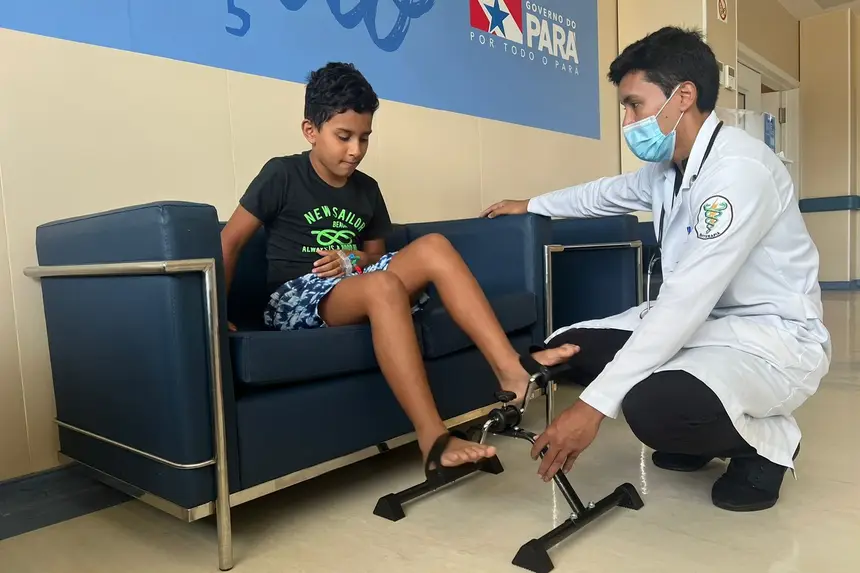
The professional adds that for patients with long-term hospitalization in the Intensive Care Unit (ICU), motor activities are also performed, upon medical release, always initiated at the bedside, according to the patient's tolerance. "Bedside and out-of-room activities provide the patient, actively, with motor and respiratory gains. Due to hospitalization, the patient spends hours lying down, thus losing skills that are regained through activities, resulting in a more humanized and precise care," complements the coordinator.
Jéssica highlights that in the wards, the gains from motor activities are even greater. "A large part of what the patient lost due to hospitalization, we work to recover as much as possible, in addition to injuries from immobility and loss of muscle mass. For example, children recover by playing. Therefore, we provide motor and respiratory rehabilitation in a humanized way to contribute to hospital discharge as soon as possible," reinforces the physiotherapist.
Having fun at each session of hospital rehabilitation after a surgical procedure performed seven days ago, João Bernardo Almeida, a 12-year-old resident of the municipality of São Miguel do Guamá, about 147 km from Belém, has activities such as the cycle ergometer, cones, sticks, and balls in his hospital recovery schedule, therapeutic tools that have been enhancing his clinical condition.
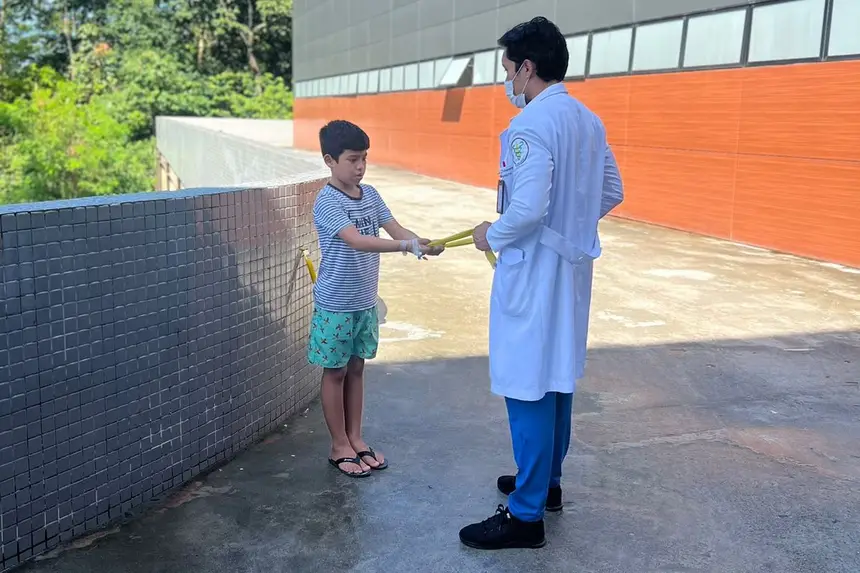
"All rehabilitation activities make the day lighter, as hospitalization makes the child bored inside the hospital; today, his eyes sparkled again when he was called to use the 'little bike' (cycle ergometer). The activities certainly make recovery lighter and faster. Here I really saw a difference in care, never experienced when I was in other hospitals," guarantees the mother, Márcia da Silva.
Service - The structure of PSRM reinforces this commitment to excellence by offering 119 beds distributed among emergency care, hospitalizations, and ICUs, in addition to six surgical rooms equipped for medium and high complexity procedures, including minimally invasive ones, such as videolaparoscopies, which reduce recovery and hospitalization time.
Managed by the State Department of Public Health (Sespa), PSRM has established itself as a symbol of the reconfiguration of public health in Pará, providing Emergency and Urgency care for Belém and the metropolitan region, operating 24 hours a day, attending to critical cases in specialties such as general surgery, vascular, pediatric, thoracic, bucomaxillofacial, and neurosurgery.


